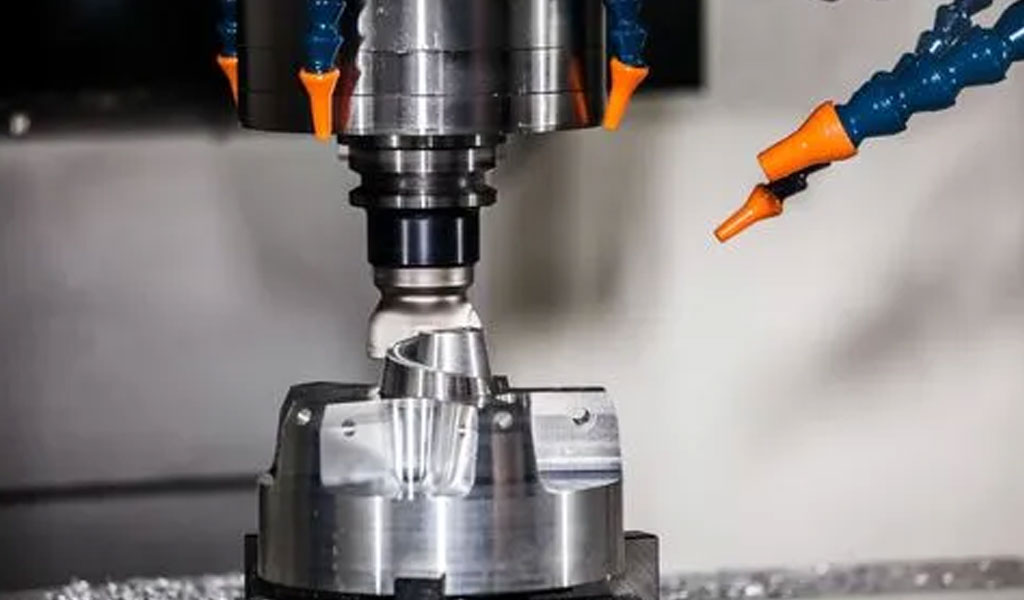
Runout is a critical concept in the field of machining, referring to the deviation of a tool or workpiece from its intended path or axis during rotation. This deviation can have significant implications for the accuracy, precision, and surface finish of the machined part, making it a key consideration in various manufacturing processes. Understanding the causes, types, measurement techniques, and effects of runout is essential for ensuring the quality and efficiency of machining operations.
1. Definition and Overview
Runout in machining is the deviation of a rotating tool or workpiece from its true axis. It can occur in various forms, including radial, axial, and face runout. Each type of runout affects the machining process differently, and controlling runout is crucial for achieving high precision and accuracy in manufacturing.
2. Types of Runout
- Radial Runout: Radial runout occurs when the tool or workpiece wobbles side to side relative to the axis of rotation. This type of runout is common in drilling, milling, and turning operations.
- Axial Runout: Axial runout, also known as end play, refers to the deviation along the axis of rotation, causing the tool or workpiece to move back and forth. This can lead to issues with depth accuracy in machining operations.
- Face Runout: Face runout occurs when the surface perpendicular to the axis of rotation is not perfectly flat or parallel. This type of runout is often observed in face milling or grinding operations.
3. Causes of Runout
Runout can be caused by various factors, including:
- Toolholder Defects: Imperfections in the toolholder, such as misalignment or wear, can lead to runout.
- Spindle Issues: Wear or damage to the spindle, the part of the machine that holds and rotates the tool, can cause runout.
- Tool Defects: Bent or improperly manufactured tools can introduce runout into the machining process.
- Machine Wear and Tear: Over time, wear and tear on the machine components can lead to increased runout.
- Improper Installation: Incorrect installation of the tool or workpiece can result in runout.
4. Measurement of Runout
Accurate measurement of runout is essential for identifying and correcting issues in the machining process. Common measurement techniques include:
- Dial Indicator: A dial indicator is commonly used to measure runout by placing the indicator tip against the rotating surface and observing the needle movement.
- Electronic Gauges: More advanced electronic gauges can provide precise measurements of runout with high accuracy and resolution.
- Optical Measurement: Optical methods, such as laser scanners, can be used for non-contact measurement of runout, particularly in high-precision applications.
5. Effects of Runout on Machining
Runout can have several detrimental effects on the machining process, including:
- Reduced Accuracy: Runout can lead to dimensional inaccuracies in the machined part, affecting its fit and function.
- Poor Surface Finish: Surface finish can be compromised due to uneven cutting forces caused by runout.
- Increased Tool Wear: Runout can cause uneven wear on the cutting tool, leading to premature tool failure.
- Vibration and Noise: Excessive runout can introduce vibrations and noise into the machining process, which can further affect the quality of the machined part.
6. Methods for Controlling Runout
Several methods can be employed to minimize or eliminate runout in machining:
- Precision Tooling: Using high-quality, precision-made tooling can reduce the likelihood of runout.
- Regular Maintenance: Regular inspection and maintenance of machine components, such as spindles and toolholders, can help prevent runout.
- Proper Installation Techniques: Ensuring that tools and workpieces are correctly installed can minimize runout.
- Balancing and Alignment: Balancing rotating components and aligning the machine setup can reduce runout.
7. Runout in Different Machining Operations
Runout can manifest differently depending on the machining operation:
- Turning: In turning operations, runout can cause concentricity issues, leading to uneven diameters and poor surface finish.
- Milling: In milling, runout can result in uneven material removal and poor surface quality.
- Drilling: In drilling, runout can cause oversized or out-of-round holes, as well as increased tool wear.
- Grinding: In grinding operations, runout can lead to uneven surface finish and dimensional inaccuracies.
8. Advanced Techniques for Runout Mitigation
- Active Compensation: Some modern machines are equipped with active compensation systems that automatically adjust for runout in real-time.
- High-Precision Bearings: Using high-precision bearings in spindles can reduce the occurrence of runout.
- Custom Tooling: Custom-designed tooling can be used to minimize runout, especially in specialized applications.
9. The Role of CNC Machines in Controlling Runout
CNC (Computer Numerical Control) machines have advanced capabilities for controlling runout through precise movements and automated adjustments. CNC machines can compensate for minor runout issues by adjusting tool paths and feed rates.
10. Case Studies and Practical Applications
- Case Study 1: Runout in High-Speed Milling: Analysis of runout effects in high-speed milling operations, including its impact on surface finish and tool life.
- Case Study 2: Runout in Aerospace Manufacturing: Examination of how runout control is critical in the manufacturing of aerospace components, where precision is paramount.
- Practical Application: Runout in Medical Device Manufacturing: Discussion of the importance of runout control in the production of medical devices, where tolerances are extremely tight.
11. Future Trends in Runout Control
- Automation and AI: The future of runout control may involve greater use of automation and artificial intelligence to predict and correct runout in real-time.
- Advanced Materials: The development of new materials with better wear resistance could reduce runout caused by tool wear.
- Integrated Monitoring Systems: The integration of monitoring systems that provide continuous feedback on runout during machining operations.
12. Conclusion
Runout is a critical factor in machining that can significantly impact the quality and precision of manufactured parts. By understanding the causes, measurement techniques, and methods for controlling runout, manufacturers can improve the reliability and performance of their machining processes. Continued advancements in technology and materials science will likely lead to even more effective methods for managing runout in the future.